Thomas Albdorf is a Photographer, Graphic Designer and Conceptual Artist currently living and working in Vienna, Austria. Albdorf's photographs explore the relationship between the physical and the mirrored lucidity of theses spaces in time. His photographs have been printed in numerous publications such as A5 Magazine No. 11, Tell Mum Everything Is Ok N°5 and The Velvet Cell Cagazine – Issue 5, to name a few.
![]() Soft Golden Mirror
Aint-Bad Magazine: Aint-Bad Magazine and the Little Beasts Exhibition was the first time you were exhibited in the USA. How did you feel when you found out about this?
Thomas Albdorf: I was pretty much flabbergasted. I have only participated in one exhibition before in the UK where everything more or less happened via the Internet, except me sending the actual prints to the gallery. Although it feels a bit strange to see photographs or videos from an exhibition that displays your work without you being there and hanging and installing everything, I love the fact that the process of curating and assembling a factual physical exhibition with various artists' work from around the world gives curators as well as artists completely new possibilities, if not to say it democratizes the art-world a bit more.
What inspired you to create the Mirrors Series?
I worked before with small interventions - mainly simple cardboard objects and foils - that I positioned in places that are usually abandoned or associated with secluded romanticism, mainly the forest.
I then more or less accidentally created my first photograph that used a mirror they way I later worked with them in my series. I won a small make-up mirror in a raffle at a carnival party (it's kind of a tradition in Austria) and really wondered what to do with it. A friend of mine who also was at the party - she knows my work - was like "Hey Thomas, nice win! Why not put it in the woods and make some art out of it?" I thought "Hell, why not?" So I staged the mirror on a table and took a look at it through my viewfinder to see how it appeared. The only thing visible in the mirror was the blue of my jacket that I wore that day, and due to I focused on the mirror and not on the reflection, it was of course blurred - an abstract self portrait.
Soft Golden Mirror
Aint-Bad Magazine: Aint-Bad Magazine and the Little Beasts Exhibition was the first time you were exhibited in the USA. How did you feel when you found out about this?
Thomas Albdorf: I was pretty much flabbergasted. I have only participated in one exhibition before in the UK where everything more or less happened via the Internet, except me sending the actual prints to the gallery. Although it feels a bit strange to see photographs or videos from an exhibition that displays your work without you being there and hanging and installing everything, I love the fact that the process of curating and assembling a factual physical exhibition with various artists' work from around the world gives curators as well as artists completely new possibilities, if not to say it democratizes the art-world a bit more.
What inspired you to create the Mirrors Series?
I worked before with small interventions - mainly simple cardboard objects and foils - that I positioned in places that are usually abandoned or associated with secluded romanticism, mainly the forest.
I then more or less accidentally created my first photograph that used a mirror they way I later worked with them in my series. I won a small make-up mirror in a raffle at a carnival party (it's kind of a tradition in Austria) and really wondered what to do with it. A friend of mine who also was at the party - she knows my work - was like "Hey Thomas, nice win! Why not put it in the woods and make some art out of it?" I thought "Hell, why not?" So I staged the mirror on a table and took a look at it through my viewfinder to see how it appeared. The only thing visible in the mirror was the blue of my jacket that I wore that day, and due to I focused on the mirror and not on the reflection, it was of course blurred - an abstract self portrait.
![]() Self-Portrait with Blue Jacket
I then realized that I could use the shallow depth of field of a photograph to shift the focus from the normally constituting point - the reflected image - to the mirror itself and therefore present it as an autonomous object.
In a second stage, I worked with reflective foil to create "soft" mirrors that became a fixed structure in the photograph, while being soft and constantly moving in reality, a way that I also used in my series series "Soft Matter".
Self-Portrait with Blue Jacket
I then realized that I could use the shallow depth of field of a photograph to shift the focus from the normally constituting point - the reflected image - to the mirror itself and therefore present it as an autonomous object.
In a second stage, I worked with reflective foil to create "soft" mirrors that became a fixed structure in the photograph, while being soft and constantly moving in reality, a way that I also used in my series series "Soft Matter".
![]() Green Cube
Print Matters? Does it? What does being a part of a printed publication mean to you?
For me it is very important to see my photographs published in a magazine as well as to have physical prints, mainly due to the fact that my whole photography respectively its communication is primarily happening on the internet. I have more and work with prints then sculptural objects that relate to each other. The last publication I took part in Tell mum everything is okay n°5 opened my eyes to the very connect of the zine or books and the integration between different works from various artists. This completely changed my personal perception of the printed photograph.
Green Cube
Print Matters? Does it? What does being a part of a printed publication mean to you?
For me it is very important to see my photographs published in a magazine as well as to have physical prints, mainly due to the fact that my whole photography respectively its communication is primarily happening on the internet. I have more and work with prints then sculptural objects that relate to each other. The last publication I took part in Tell mum everything is okay n°5 opened my eyes to the very connect of the zine or books and the integration between different works from various artists. This completely changed my personal perception of the printed photograph.
![]() Soft Lucent Mirror
What are you currently working on?
I now find myself abandoning my formerly photographic practices and now only visit the forest for hiking and not necessarily for photography. I became interested in still life in part due to artists as David Brandon Geeting, Aurelien Arbet and Jeremie Egry Since then I have been working on developing a new approach that comes out of my former sculptural works.
Soft Lucent Mirror
What are you currently working on?
I now find myself abandoning my formerly photographic practices and now only visit the forest for hiking and not necessarily for photography. I became interested in still life in part due to artists as David Brandon Geeting, Aurelien Arbet and Jeremie Egry Since then I have been working on developing a new approach that comes out of my former sculptural works.
![]() Mirror
I’m now more focused on the relation between photographs to different objects in relation to each other. Although it seems like a natural transition from the work I did last year, something feels completely different about what I do now compared then. I'm mostly shooting 35mm at the moment, I hardly use my medium format equipment any more, and also digital becomes important again.
Right now I'm currently working on a small publication that sums up my own work from last year and there are also some collaborations with other artists, I'm planning to do a photographic experiment with an artist that works in a very similar way. We’ll see what happens.
Mirror
I’m now more focused on the relation between photographs to different objects in relation to each other. Although it seems like a natural transition from the work I did last year, something feels completely different about what I do now compared then. I'm mostly shooting 35mm at the moment, I hardly use my medium format equipment any more, and also digital becomes important again.
Right now I'm currently working on a small publication that sums up my own work from last year and there are also some collaborations with other artists, I'm planning to do a photographic experiment with an artist that works in a very similar way. We’ll see what happens.
![]() 2 Cubes [sketch]
Where would you like to see yourself in the next year?
Currently everything is in flux, so I can't really tell you. The next thing I'm looking forward to is a 3-week-trip to Japan with my girlfriend, and after that, I don't really know. I'm happy as long as I can take photographs.
2 Cubes [sketch]
Where would you like to see yourself in the next year?
Currently everything is in flux, so I can't really tell you. The next thing I'm looking forward to is a 3-week-trip to Japan with my girlfriend, and after that, I don't really know. I'm happy as long as I can take photographs.
![]() Bacon and Blue
See more photographs by Thomas Albdorf by visiting his website.
Interview by Taylor Curry
Bacon and Blue
See more photographs by Thomas Albdorf by visiting his website.
Interview by Taylor Curry
 Soft Golden Mirror
Aint-Bad Magazine: Aint-Bad Magazine and the Little Beasts Exhibition was the first time you were exhibited in the USA. How did you feel when you found out about this?
Thomas Albdorf: I was pretty much flabbergasted. I have only participated in one exhibition before in the UK where everything more or less happened via the Internet, except me sending the actual prints to the gallery. Although it feels a bit strange to see photographs or videos from an exhibition that displays your work without you being there and hanging and installing everything, I love the fact that the process of curating and assembling a factual physical exhibition with various artists' work from around the world gives curators as well as artists completely new possibilities, if not to say it democratizes the art-world a bit more.
What inspired you to create the Mirrors Series?
I worked before with small interventions - mainly simple cardboard objects and foils - that I positioned in places that are usually abandoned or associated with secluded romanticism, mainly the forest.
I then more or less accidentally created my first photograph that used a mirror they way I later worked with them in my series. I won a small make-up mirror in a raffle at a carnival party (it's kind of a tradition in Austria) and really wondered what to do with it. A friend of mine who also was at the party - she knows my work - was like "Hey Thomas, nice win! Why not put it in the woods and make some art out of it?" I thought "Hell, why not?" So I staged the mirror on a table and took a look at it through my viewfinder to see how it appeared. The only thing visible in the mirror was the blue of my jacket that I wore that day, and due to I focused on the mirror and not on the reflection, it was of course blurred - an abstract self portrait.
Soft Golden Mirror
Aint-Bad Magazine: Aint-Bad Magazine and the Little Beasts Exhibition was the first time you were exhibited in the USA. How did you feel when you found out about this?
Thomas Albdorf: I was pretty much flabbergasted. I have only participated in one exhibition before in the UK where everything more or less happened via the Internet, except me sending the actual prints to the gallery. Although it feels a bit strange to see photographs or videos from an exhibition that displays your work without you being there and hanging and installing everything, I love the fact that the process of curating and assembling a factual physical exhibition with various artists' work from around the world gives curators as well as artists completely new possibilities, if not to say it democratizes the art-world a bit more.
What inspired you to create the Mirrors Series?
I worked before with small interventions - mainly simple cardboard objects and foils - that I positioned in places that are usually abandoned or associated with secluded romanticism, mainly the forest.
I then more or less accidentally created my first photograph that used a mirror they way I later worked with them in my series. I won a small make-up mirror in a raffle at a carnival party (it's kind of a tradition in Austria) and really wondered what to do with it. A friend of mine who also was at the party - she knows my work - was like "Hey Thomas, nice win! Why not put it in the woods and make some art out of it?" I thought "Hell, why not?" So I staged the mirror on a table and took a look at it through my viewfinder to see how it appeared. The only thing visible in the mirror was the blue of my jacket that I wore that day, and due to I focused on the mirror and not on the reflection, it was of course blurred - an abstract self portrait.
 Self-Portrait with Blue Jacket
I then realized that I could use the shallow depth of field of a photograph to shift the focus from the normally constituting point - the reflected image - to the mirror itself and therefore present it as an autonomous object.
In a second stage, I worked with reflective foil to create "soft" mirrors that became a fixed structure in the photograph, while being soft and constantly moving in reality, a way that I also used in my series series "Soft Matter".
Self-Portrait with Blue Jacket
I then realized that I could use the shallow depth of field of a photograph to shift the focus from the normally constituting point - the reflected image - to the mirror itself and therefore present it as an autonomous object.
In a second stage, I worked with reflective foil to create "soft" mirrors that became a fixed structure in the photograph, while being soft and constantly moving in reality, a way that I also used in my series series "Soft Matter".
 Green Cube
Print Matters? Does it? What does being a part of a printed publication mean to you?
For me it is very important to see my photographs published in a magazine as well as to have physical prints, mainly due to the fact that my whole photography respectively its communication is primarily happening on the internet. I have more and work with prints then sculptural objects that relate to each other. The last publication I took part in Tell mum everything is okay n°5 opened my eyes to the very connect of the zine or books and the integration between different works from various artists. This completely changed my personal perception of the printed photograph.
Green Cube
Print Matters? Does it? What does being a part of a printed publication mean to you?
For me it is very important to see my photographs published in a magazine as well as to have physical prints, mainly due to the fact that my whole photography respectively its communication is primarily happening on the internet. I have more and work with prints then sculptural objects that relate to each other. The last publication I took part in Tell mum everything is okay n°5 opened my eyes to the very connect of the zine or books and the integration between different works from various artists. This completely changed my personal perception of the printed photograph.
 Soft Lucent Mirror
What are you currently working on?
I now find myself abandoning my formerly photographic practices and now only visit the forest for hiking and not necessarily for photography. I became interested in still life in part due to artists as David Brandon Geeting, Aurelien Arbet and Jeremie Egry Since then I have been working on developing a new approach that comes out of my former sculptural works.
Soft Lucent Mirror
What are you currently working on?
I now find myself abandoning my formerly photographic practices and now only visit the forest for hiking and not necessarily for photography. I became interested in still life in part due to artists as David Brandon Geeting, Aurelien Arbet and Jeremie Egry Since then I have been working on developing a new approach that comes out of my former sculptural works.
 Mirror
I’m now more focused on the relation between photographs to different objects in relation to each other. Although it seems like a natural transition from the work I did last year, something feels completely different about what I do now compared then. I'm mostly shooting 35mm at the moment, I hardly use my medium format equipment any more, and also digital becomes important again.
Right now I'm currently working on a small publication that sums up my own work from last year and there are also some collaborations with other artists, I'm planning to do a photographic experiment with an artist that works in a very similar way. We’ll see what happens.
Mirror
I’m now more focused on the relation between photographs to different objects in relation to each other. Although it seems like a natural transition from the work I did last year, something feels completely different about what I do now compared then. I'm mostly shooting 35mm at the moment, I hardly use my medium format equipment any more, and also digital becomes important again.
Right now I'm currently working on a small publication that sums up my own work from last year and there are also some collaborations with other artists, I'm planning to do a photographic experiment with an artist that works in a very similar way. We’ll see what happens.
 2 Cubes [sketch]
Where would you like to see yourself in the next year?
Currently everything is in flux, so I can't really tell you. The next thing I'm looking forward to is a 3-week-trip to Japan with my girlfriend, and after that, I don't really know. I'm happy as long as I can take photographs.
2 Cubes [sketch]
Where would you like to see yourself in the next year?
Currently everything is in flux, so I can't really tell you. The next thing I'm looking forward to is a 3-week-trip to Japan with my girlfriend, and after that, I don't really know. I'm happy as long as I can take photographs.
 Bacon and Blue
See more photographs by Thomas Albdorf by visiting his website.
Interview by Taylor Curry
Bacon and Blue
See more photographs by Thomas Albdorf by visiting his website.
Interview by Taylor Curry
 How do you describe this work?
I would class myself as a digital image-maker; the work is a mixture of photo manipulation, collage, and image glitching. Building shapes, colour fields as you would with other media.
How do you describe this work?
I would class myself as a digital image-maker; the work is a mixture of photo manipulation, collage, and image glitching. Building shapes, colour fields as you would with other media.
 How long have you been working in this format?
I've been working with computers since the last year of my BA; it was actually quite a freeing experience in how immediate the results are without the kind of issues like drying times, it felt a lot more honest to be using a computer. I started working with film at first and by chance discovered breaks and glitches with the video files, and then moved on to working with images.
What are these images really about?
They are about identity and information and how we react to our environment in our current socio-political situation. We are living in cultures of machine-inspired perfection against the backdrop of inequality that also pervades into our lives. We are so connected to the world but at the same time just a distant as we ever were.
In previous interviews you described you work as a "blatant lack of control," does this process further discuss the lack of control in our culture as a result of our mass media machine?
Yes, in a way, it shows how you can be affected by looking at so much information. We form our lives around ever more complex structures. I think there is a certain anxiety about losing them. With the work, you are losing all the perfect images you are used to seeing, the image is breaking, creating a byproduct or error. The system is showing something unexpected. Though I want to make a distinction here, the work itself is not formed by chance or a lack of control as the computer will only do what you ask it to do. This creates a tension between how my tools should be used and how I am using them.
How long have you been working in this format?
I've been working with computers since the last year of my BA; it was actually quite a freeing experience in how immediate the results are without the kind of issues like drying times, it felt a lot more honest to be using a computer. I started working with film at first and by chance discovered breaks and glitches with the video files, and then moved on to working with images.
What are these images really about?
They are about identity and information and how we react to our environment in our current socio-political situation. We are living in cultures of machine-inspired perfection against the backdrop of inequality that also pervades into our lives. We are so connected to the world but at the same time just a distant as we ever were.
In previous interviews you described you work as a "blatant lack of control," does this process further discuss the lack of control in our culture as a result of our mass media machine?
Yes, in a way, it shows how you can be affected by looking at so much information. We form our lives around ever more complex structures. I think there is a certain anxiety about losing them. With the work, you are losing all the perfect images you are used to seeing, the image is breaking, creating a byproduct or error. The system is showing something unexpected. Though I want to make a distinction here, the work itself is not formed by chance or a lack of control as the computer will only do what you ask it to do. This creates a tension between how my tools should be used and how I am using them.

 In several of your pieces the original photograph is recognizable, how important is the context of the original image?
It is not necessary to understand the original image to appreciate my philosophy. But I think it’s important sometimes to know or be able to see image was once whole or complete to push certain aspects in a piece.
What artists would you attribute to your interest in glitch art?
Coming from a painting background this is where a draw a lot of influences from artists like Basquiat, Bacon and Picasso for their use of colour, shape and line to render figures and environments. Abstract expressionism plays a big part too, the power of colour to affect a mood. Lucian Freud and Jenny Saville for the sculptural way in which they form a body. Its nice I have the whole of art history at my fingertips, if I chose.
One last thing, would you suggest something for us to read?
I would read High Rise by J G Ballard, it’s about how modern life in an urban landscape and advances of technology can cause people to regress socially back their most base tribal instincts.
To see more work, visit his website .
You can also find him on Rise Art
In several of your pieces the original photograph is recognizable, how important is the context of the original image?
It is not necessary to understand the original image to appreciate my philosophy. But I think it’s important sometimes to know or be able to see image was once whole or complete to push certain aspects in a piece.
What artists would you attribute to your interest in glitch art?
Coming from a painting background this is where a draw a lot of influences from artists like Basquiat, Bacon and Picasso for their use of colour, shape and line to render figures and environments. Abstract expressionism plays a big part too, the power of colour to affect a mood. Lucian Freud and Jenny Saville for the sculptural way in which they form a body. Its nice I have the whole of art history at my fingertips, if I chose.
One last thing, would you suggest something for us to read?
I would read High Rise by J G Ballard, it’s about how modern life in an urban landscape and advances of technology can cause people to regress socially back their most base tribal instincts.
To see more work, visit his website .
You can also find him on Rise Art




 Interview by Caitie Moore
Interview by Caitie Moore
 You went to a state school in Michigan after high school-- what made you decide to leave state school and instead attend an art school for photography?
A lot of individual attention was missing at Michigan State. And I think that a lot of the art kids are too caught up in trying to be different than the other athletes and students. They are too concerned with being artists rather than creating art. There just weren’t people around that were on the same brain-waves that I was on.
On the note of making art, how would you describe the work that you create to someone that has not seen it before?
(laughs)… Hmm that’s so difficult (laughs).. I would probably tell them that I take a lot of photographs of objects that normally wouldn’t be photographed. And they are kind of dry, probably. A little satire, but mostly I would probably explain my photographs in more terms of the sculptures or still lives that I make, rather than the photography of it.
You went to a state school in Michigan after high school-- what made you decide to leave state school and instead attend an art school for photography?
A lot of individual attention was missing at Michigan State. And I think that a lot of the art kids are too caught up in trying to be different than the other athletes and students. They are too concerned with being artists rather than creating art. There just weren’t people around that were on the same brain-waves that I was on.
On the note of making art, how would you describe the work that you create to someone that has not seen it before?
(laughs)… Hmm that’s so difficult (laughs).. I would probably tell them that I take a lot of photographs of objects that normally wouldn’t be photographed. And they are kind of dry, probably. A little satire, but mostly I would probably explain my photographs in more terms of the sculptures or still lives that I make, rather than the photography of it.
 From what I have seen, your work has started to take a transition into more technology/computer based imagery. Can you explain this transformation and why you think it might be taking place?
I spent a lot of time at Michigan state, and at my first year at SCAD, trying to distance myself from technology, and be really minimal with my technology use. I would only make silver prints and wanted people to sit down and look at them and spend time with them. But I think I just realized that our generation is not going to have that kind of attention span, so I might as well be trying to create images that people can look at and digest in a few seconds, or, if desired, they can really pick them apart. So I like making imagery for the web because it feels…well, its feels less serious. I don’t feel pressure to post something online, but I do feel pressure to make a silver print and show it to someone you know? It’s just a different world.
From what I have seen, your work has started to take a transition into more technology/computer based imagery. Can you explain this transformation and why you think it might be taking place?
I spent a lot of time at Michigan state, and at my first year at SCAD, trying to distance myself from technology, and be really minimal with my technology use. I would only make silver prints and wanted people to sit down and look at them and spend time with them. But I think I just realized that our generation is not going to have that kind of attention span, so I might as well be trying to create images that people can look at and digest in a few seconds, or, if desired, they can really pick them apart. So I like making imagery for the web because it feels…well, its feels less serious. I don’t feel pressure to post something online, but I do feel pressure to make a silver print and show it to someone you know? It’s just a different world.
 So, it’s kind of like an alternative form of creativity and expression that doesn’t require you to be stressed or feel as much pressure?
Yes! Exactly.
Alright Mike Lets talk about Bananas. A lot of your work, especially the more recent, has contained bananas. Why? And what do you want a viewer to take away from that?
I spent my childhood and early adult life at home in Michigan wrapped around religion. I remember noticing that around religious people, sex was a topic that made them quiver and uncomfortable. We would always split up to talk about “man stuff” and “woman stuff” and that made me want to scream "VAGINA!" as loud as I could. Once I left the church, I felt able to talk about sexual things more freely. So I think that the banana is a phallus in some of the imagery. In other sculptures, it is more of an iconographic symbol. And also I think its because bananas are like .16 cents per banana, so I could get ten bananas and make ridiculous photographs all day without having to worry about any sort of cost…(laughs).
So, it’s kind of like an alternative form of creativity and expression that doesn’t require you to be stressed or feel as much pressure?
Yes! Exactly.
Alright Mike Lets talk about Bananas. A lot of your work, especially the more recent, has contained bananas. Why? And what do you want a viewer to take away from that?
I spent my childhood and early adult life at home in Michigan wrapped around religion. I remember noticing that around religious people, sex was a topic that made them quiver and uncomfortable. We would always split up to talk about “man stuff” and “woman stuff” and that made me want to scream "VAGINA!" as loud as I could. Once I left the church, I felt able to talk about sexual things more freely. So I think that the banana is a phallus in some of the imagery. In other sculptures, it is more of an iconographic symbol. And also I think its because bananas are like .16 cents per banana, so I could get ten bananas and make ridiculous photographs all day without having to worry about any sort of cost…(laughs).
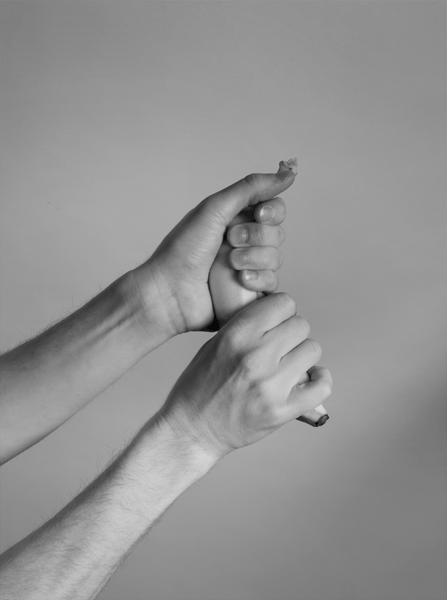 Would you say that you do want people to think about sex when viewing these images?
I think that it’s really hard not to think about sex, and in the .gifs particularly. Initially they were just odd pairings of objects, and bananas eventually became more and more prominent as the male genitalia. I guess, that if someone didn’t think about sex when looking at the banana .gifs, I would be very surprised.
Would you say that you do want people to think about sex when viewing these images?
I think that it’s really hard not to think about sex, and in the .gifs particularly. Initially they were just odd pairings of objects, and bananas eventually became more and more prominent as the male genitalia. I guess, that if someone didn’t think about sex when looking at the banana .gifs, I would be very surprised.
 Your work, both your film and your digital based creations, are mostly black and white. Why do you think that you have been drawn to black and white over the years rather than color?
Black and white was my way of contextualizing the still-lives into a Ruscha-esque, 1960’s, pop-art/minimalism framework.
Your work, both your film and your digital based creations, are mostly black and white. Why do you think that you have been drawn to black and white over the years rather than color?
Black and white was my way of contextualizing the still-lives into a Ruscha-esque, 1960’s, pop-art/minimalism framework.
 What do your next two years look like?
I’d love to do collaborative installations as well as continue my net-art. I’ll also be really trying to have a zine printed by the end of the spring. Also it’s very possible that my music career with Triathalon will affect my plans after school.
See Mike's full body at www.michaelyounker.com
Check out his band Triathalon on bandcamp
Interview by Carson Sanders
What do your next two years look like?
I’d love to do collaborative installations as well as continue my net-art. I’ll also be really trying to have a zine printed by the end of the spring. Also it’s very possible that my music career with Triathalon will affect my plans after school.
See Mike's full body at www.michaelyounker.com
Check out his band Triathalon on bandcamp
Interview by Carson Sanders
 Amarillo, 2011
131
I grew up in a public housing sector in South Central Phoenix, where the doors stayed
locked and the lights stayed on. As my teen years approached, I moved to a neighborhood where drugs and police cars had little to no presence. It was nice. As an adult, I returned back to my roots in search of a portion of me that seemed uncharted and curious. What I found was, people. People like me who had a story to tell yet no one to tell it to.
“We are uncomfortable. We love the attention. We are proud.We are afraid. Will they
judge?.. We are comfortable.” That hour of convincing, that minute of focusing that second of clicking, nothing matters. We are human.
131, a home, a place where sounds and the scent of food and cigarette smoke are always
present and the sense of color remains forever vibrant. Here, since the 1970’s, old
Mexican traditions have met new assimilated lifestyles as individuals search for identity
and belonging. A space where hope strives to live.
Amarillo, 2011
131
I grew up in a public housing sector in South Central Phoenix, where the doors stayed
locked and the lights stayed on. As my teen years approached, I moved to a neighborhood where drugs and police cars had little to no presence. It was nice. As an adult, I returned back to my roots in search of a portion of me that seemed uncharted and curious. What I found was, people. People like me who had a story to tell yet no one to tell it to.
“We are uncomfortable. We love the attention. We are proud.We are afraid. Will they
judge?.. We are comfortable.” That hour of convincing, that minute of focusing that second of clicking, nothing matters. We are human.
131, a home, a place where sounds and the scent of food and cigarette smoke are always
present and the sense of color remains forever vibrant. Here, since the 1970’s, old
Mexican traditions have met new assimilated lifestyles as individuals search for identity
and belonging. A space where hope strives to live.
 Mary, 2011
Mary, 2011
 Luis, 2011
Luis, 2011
 Reach, 2011
Eduardo recently finished his B.F.A. in photography from Arizona State University.
Find more work on his website, Eduardo L. Rivera.com
Reach, 2011
Eduardo recently finished his B.F.A. in photography from Arizona State University.
Find more work on his website, Eduardo L. Rivera.com
 Shopping Totem, 2010
Shopping Totem, 2010
 Neoliberal Totem, 2010
The problem with this understanding of Marxist theory is that it concentrates mostly on those production aspects of industrialization that might be considered too Romantic in contemporary terms. Objectification is a process where one produces, reflects and moves on—a marked progression. However, Marx argues that through our capitalistic industrial model, one where products are created through labor and then sold through the marketplace to individuals who do not create them causes a rupture in the progression process. Here one produces, but not for himself and his own mirror for self-understanding—in short, the producer does not necessarily own the fruits of his own labors. Further, most individuals do not own the means to their own objectification potential, a consequence of rampant industrialization. The means of production—the private ownership of tools and resources—rests in the hands of a small minority and the majority of individuals are “forced to attempt to objectify themselves through forms which are produced in the image of other people’s interests.”6 goods distributed to marketplaces.
Neoliberal Totem, 2010
The problem with this understanding of Marxist theory is that it concentrates mostly on those production aspects of industrialization that might be considered too Romantic in contemporary terms. Objectification is a process where one produces, reflects and moves on—a marked progression. However, Marx argues that through our capitalistic industrial model, one where products are created through labor and then sold through the marketplace to individuals who do not create them causes a rupture in the progression process. Here one produces, but not for himself and his own mirror for self-understanding—in short, the producer does not necessarily own the fruits of his own labors. Further, most individuals do not own the means to their own objectification potential, a consequence of rampant industrialization. The means of production—the private ownership of tools and resources—rests in the hands of a small minority and the majority of individuals are “forced to attempt to objectify themselves through forms which are produced in the image of other people’s interests.”6 goods distributed to marketplaces.
 Beer Can Totem, 2011
Beer Can Totem, 2011
 Plastic Totem, 2010
How then do we gather meaning from objects offered as consumer commodities? While the introduction to Marx’s Objectification sets a good foundation as to why goods are produced and demonstrates their progressive potential, if we are to look at our current system, what do these objects mean and how can the typical consumer interpret them? Here we revisit an earlier argument that introduced Gabriel and Lang’s notion of an implied meaning within consumer commodities. We can argue, from their view, that individual pursuits demonstrated by labor do not share any of the progressive benefits put forth by the theories of Objectification and its self- alienation.8 in their 1995 book The Unmanageable Consumer view, but presented as a more overtly contrasting standpoint of the nature-man duality claimed by Miller and Marx, is the writing of Jean Baudrillard. In his essay Consumer Society, he argues for a structured, semiotic approach to the interpretation of material objects within consumer societies, one treating objects as signs within a larger system of communication. To Baudrillard, consumption is a system of meaning, much like language.10 This suggests that what Baudrillard refers to, as the “ideal of conformity” through a “standard package” is actually a semiotic communication of status through the consumption and accumulation of particular goods made available to them.
Plastic Totem, 2010
How then do we gather meaning from objects offered as consumer commodities? While the introduction to Marx’s Objectification sets a good foundation as to why goods are produced and demonstrates their progressive potential, if we are to look at our current system, what do these objects mean and how can the typical consumer interpret them? Here we revisit an earlier argument that introduced Gabriel and Lang’s notion of an implied meaning within consumer commodities. We can argue, from their view, that individual pursuits demonstrated by labor do not share any of the progressive benefits put forth by the theories of Objectification and its self- alienation.8 in their 1995 book The Unmanageable Consumer view, but presented as a more overtly contrasting standpoint of the nature-man duality claimed by Miller and Marx, is the writing of Jean Baudrillard. In his essay Consumer Society, he argues for a structured, semiotic approach to the interpretation of material objects within consumer societies, one treating objects as signs within a larger system of communication. To Baudrillard, consumption is a system of meaning, much like language.10 This suggests that what Baudrillard refers to, as the “ideal of conformity” through a “standard package” is actually a semiotic communication of status through the consumption and accumulation of particular goods made available to them.
 Toilet Paper Totem, 2011
Toilet Paper Totem, 2011
 Toy Totem, 2011
The photographs in Material World take influence from this Marxist concept “Objectification”. It is rooted in the transformative relationship between humankind and nature where individuals manifest their activities into materially existing forms. For Marx, interpreted by Miller, these forms serve as mirrors for self-understanding through contemplation and reflection, progressive steps towards our enhanced capacity as human beings.
Toy Totem, 2011
The photographs in Material World take influence from this Marxist concept “Objectification”. It is rooted in the transformative relationship between humankind and nature where individuals manifest their activities into materially existing forms. For Marx, interpreted by Miller, these forms serve as mirrors for self-understanding through contemplation and reflection, progressive steps towards our enhanced capacity as human beings.
 Tire Totem, 2011
Objects do have communicative abilities and we give them meaning, investing cultural significance, passing objects from a closed, silent existence to an oral state, like a system of language, where objects can communicate certain values. Here values replace needs and so much as we create objects, will their existence as cultural artifact show that they in fact created us?
Tire Totem, 2011
Objects do have communicative abilities and we give them meaning, investing cultural significance, passing objects from a closed, silent existence to an oral state, like a system of language, where objects can communicate certain values. Here values replace needs and so much as we create objects, will their existence as cultural artifact show that they in fact created us?
 Car Culture Totem, 2011
Material World is my response to our contemporary consumer milieu. By treating these artifacts of consumer culture as Duchampian-inspired Assisted Readymades, I photograph assemblages, constructed by my own hand to form monuments and totems that serve as precarious externalizations of culture and social biography. Modeling Marx’s concept, the photographs of the totems then act as symbolic mirrors, points of reflection for my own contemplative gaze and that of society’s. The photographs speak of accumulation and materiality and aim to encourage debate about consumption and the ways in which we feel compelled to consume.
David Welch
Find more work on his website David Welch
Footnotes :
1.Daniel Miller, Stuff (Cambridge: Polity, 2010), 58.
2. Ibid. 59.
3. Self-alienation is a term borrowed from Hegel who originated the concept of Objectification within a similar context as Marx. Marx, however, viewed the term as a more appropriate way to understand man’s relationship with materiality and objects during more industrial times. Self-alienation is viewed as a positive and progressive step within Objectification.
4. Miller, Stuff. 59.
5.Daniel Miller, Material Culture and Mass Consumption (Oxford: Basil Blackwell, 1987), p 45.
6. The concept of aura as applied to objects originated with German intellectual Walter Benjamin. In the essay The Work of Art in the Age of Material Reproduction, Benjamin views the displacement of a worker’s fingerprint within objects through its mass production. This mass production mechanism destroys an objects aura by creating a “sense of universal equality of things.”
7. See footnote 3.
8. Martin Jaeggi, Thomas Seelig, and Stahel Urs. Seelig, Trade: Commodities, Communication, and Consciousness. (Zürich: Scalo, 2001), 67.
9. Jean Baudrillard and Mark Poster, "Consumer Society." In Jean Baudrillard: selected writings, (Stanford, CA: Stanford University Press, 1988), 46.
10. Baudrillard and Poster, 37.
Car Culture Totem, 2011
Material World is my response to our contemporary consumer milieu. By treating these artifacts of consumer culture as Duchampian-inspired Assisted Readymades, I photograph assemblages, constructed by my own hand to form monuments and totems that serve as precarious externalizations of culture and social biography. Modeling Marx’s concept, the photographs of the totems then act as symbolic mirrors, points of reflection for my own contemplative gaze and that of society’s. The photographs speak of accumulation and materiality and aim to encourage debate about consumption and the ways in which we feel compelled to consume.
David Welch
Find more work on his website David Welch
Footnotes :
1.Daniel Miller, Stuff (Cambridge: Polity, 2010), 58.
2. Ibid. 59.
3. Self-alienation is a term borrowed from Hegel who originated the concept of Objectification within a similar context as Marx. Marx, however, viewed the term as a more appropriate way to understand man’s relationship with materiality and objects during more industrial times. Self-alienation is viewed as a positive and progressive step within Objectification.
4. Miller, Stuff. 59.
5.Daniel Miller, Material Culture and Mass Consumption (Oxford: Basil Blackwell, 1987), p 45.
6. The concept of aura as applied to objects originated with German intellectual Walter Benjamin. In the essay The Work of Art in the Age of Material Reproduction, Benjamin views the displacement of a worker’s fingerprint within objects through its mass production. This mass production mechanism destroys an objects aura by creating a “sense of universal equality of things.”
7. See footnote 3.
8. Martin Jaeggi, Thomas Seelig, and Stahel Urs. Seelig, Trade: Commodities, Communication, and Consciousness. (Zürich: Scalo, 2001), 67.
9. Jean Baudrillard and Mark Poster, "Consumer Society." In Jean Baudrillard: selected writings, (Stanford, CA: Stanford University Press, 1988), 46.
10. Baudrillard and Poster, 37.


 Travelling among the villages in the Gaoligong Mountains, near the Myanmar’s border of West Yunnan, there is a small village called XinZhuang, where the art of papermaking has been kept alive by its inhabitants.
Fifty percent of the 680 households in XinZhuang make paper during the farming-off season. The paper is made from the bark of mulberry trees, usually producing sheets that are 68-cm-by-73-cm, a size suitable for tea packaging and funerary money.
Travelling among the villages in the Gaoligong Mountains, near the Myanmar’s border of West Yunnan, there is a small village called XinZhuang, where the art of papermaking has been kept alive by its inhabitants.
Fifty percent of the 680 households in XinZhuang make paper during the farming-off season. The paper is made from the bark of mulberry trees, usually producing sheets that are 68-cm-by-73-cm, a size suitable for tea packaging and funerary money.

 It is difficult to preserve these ancient techniques during the age of such a rapidly growing economy. Similar handmade paper had been produced for centuries in other villages along the Yunnan Province, but large businesses and investors have since monopolized the paper sales.
It is difficult to preserve these ancient techniques during the age of such a rapidly growing economy. Similar handmade paper had been produced for centuries in other villages along the Yunnan Province, but large businesses and investors have since monopolized the paper sales.


 Within the last decade, a group of friends from Beijing decided to invest money in a project for the construction of a museum to promote the preservation of the art of papermaking. An ambitious project, designed by Trace Architecture Office, was finally approved in 2011 after a long path through bureaucracy. The now Handcraft Museum of Printmaking was built by a group of local villagers, and stands beside the small village.
Within the last decade, a group of friends from Beijing decided to invest money in a project for the construction of a museum to promote the preservation of the art of papermaking. An ambitious project, designed by Trace Architecture Office, was finally approved in 2011 after a long path through bureaucracy. The now Handcraft Museum of Printmaking was built by a group of local villagers, and stands beside the small village.



 For more information about Mattia Marinolli please visit his website.
For more information about Mattia Marinolli please visit his website.
 Flash Forward kicks off this weekend. If you are in the Boston area come down to the Fairmont Battery Warf and see this incredible festival. Hosted by the Magenta Foundation, with a focus on emerging photographers, this event boasts lectures and panel discussions from distinguished professionals from the U.S and Canada.
You can find a link on their website to all the events and exhibitions. With over seven breath-taking exhibitions, among which are two group exhibitions, a solo show by Aline Smithson, a small prints show and various outdoors exhibitions, there is more than enough to dig your teeth into!
Stop by and see us at the Mini Book Fair with Indie PhotoBook Library.
If you aren't in the Boston area and would like to "sit in" on one of the lectures, you can watch the live stream from your computer.
http://www.ustream.tv/channel/flash-forward-festival-boston
Flash Forward kicks off this weekend. If you are in the Boston area come down to the Fairmont Battery Warf and see this incredible festival. Hosted by the Magenta Foundation, with a focus on emerging photographers, this event boasts lectures and panel discussions from distinguished professionals from the U.S and Canada.
You can find a link on their website to all the events and exhibitions. With over seven breath-taking exhibitions, among which are two group exhibitions, a solo show by Aline Smithson, a small prints show and various outdoors exhibitions, there is more than enough to dig your teeth into!
Stop by and see us at the Mini Book Fair with Indie PhotoBook Library.
If you aren't in the Boston area and would like to "sit in" on one of the lectures, you can watch the live stream from your computer.
http://www.ustream.tv/channel/flash-forward-festival-boston


 In 1987, in search of the “American Dream”, Karolina Karlic's family immigrated from communist Poland to Detroit MI- where her father began work in the auto industry. From this uprooted childhood, her practice concentrates on the human effects of social upheaval.
We asked our friend Matt Szal to have a conversation with Karlic about the
inspiration behind her most recent book, Elementarz, the future of her project, and thoughts on her recent Guggenheim Fellowship.
Hello Karolina, how have you been doing?
I've been doing well, I recently went to Detroit and then to North Dakota to work on my
current oil boom project. I have been so busy recently that I decided to take a trip
to the desert with some friends to get away for a few days. Now I'm back in Los
Angeles.
That sounds great. How is Detroit’s art scene nowadays?
Its good. It was definitely better at one point when the auto industry was booming.
But it’s tough now. Now there is a lot of pre-censoring that happens. Even for artists stemming from Detroit, like myself. People are very protective of what they have, having been taught to hold onto what might be easily exploited, misrepresented or stolen from them. I guess it might be similar to Texas and being a “Texan artist”, whatever that means? (laughing) I assume both share an interesting sense of pride that is very unique to the insiders-- similar to the pride of Detroiters. Detroit curators are aware of this pre-censoring and have starting to invite more international artists through various forms of participation, but with valid caution. The media, for instance, is not helping Detroit’s progress. Shame on them.
Yeah, I know, it’s hard being labeled a Texas artist.
Yeah, geographical labels do not open the discourse that should be there, in fact a lot
of times it shuts it down. Detroit definitely raised me, certain perceptions emerge
from that. I say where I am currently working and living defines each series of work.
In 1987, in search of the “American Dream”, Karolina Karlic's family immigrated from communist Poland to Detroit MI- where her father began work in the auto industry. From this uprooted childhood, her practice concentrates on the human effects of social upheaval.
We asked our friend Matt Szal to have a conversation with Karlic about the
inspiration behind her most recent book, Elementarz, the future of her project, and thoughts on her recent Guggenheim Fellowship.
Hello Karolina, how have you been doing?
I've been doing well, I recently went to Detroit and then to North Dakota to work on my
current oil boom project. I have been so busy recently that I decided to take a trip
to the desert with some friends to get away for a few days. Now I'm back in Los
Angeles.
That sounds great. How is Detroit’s art scene nowadays?
Its good. It was definitely better at one point when the auto industry was booming.
But it’s tough now. Now there is a lot of pre-censoring that happens. Even for artists stemming from Detroit, like myself. People are very protective of what they have, having been taught to hold onto what might be easily exploited, misrepresented or stolen from them. I guess it might be similar to Texas and being a “Texan artist”, whatever that means? (laughing) I assume both share an interesting sense of pride that is very unique to the insiders-- similar to the pride of Detroiters. Detroit curators are aware of this pre-censoring and have starting to invite more international artists through various forms of participation, but with valid caution. The media, for instance, is not helping Detroit’s progress. Shame on them.
Yeah, I know, it’s hard being labeled a Texas artist.
Yeah, geographical labels do not open the discourse that should be there, in fact a lot
of times it shuts it down. Detroit definitely raised me, certain perceptions emerge
from that. I say where I am currently working and living defines each series of work.
 You lived in Detroit but you are originally from Poland, right?
Yes, I was born in Poland. My dad taught mechanical engineering, which initially brought
us to the States. We first moved to a trailer park on the Mississippi River. During that first year my mom was about ready to kill my dad. We then moved to Detroit where my dad started work as an engineer.
You lived in Detroit but you are originally from Poland, right?
Yes, I was born in Poland. My dad taught mechanical engineering, which initially brought
us to the States. We first moved to a trailer park on the Mississippi River. During that first year my mom was about ready to kill my dad. We then moved to Detroit where my dad started work as an engineer.
 The Great Migration, is actually a large part of the concept of Elementarz, the migration of African Americans from the south to the ‘rust belt’ (Detroit and Chicago) for work as a response to the growth of the American auto industry in the 90s.
The Great Migration, is actually a large part of the concept of Elementarz, the migration of African Americans from the south to the ‘rust belt’ (Detroit and Chicago) for work as a response to the growth of the American auto industry in the 90s.
 So you’re working in Los Angeles currently. It doesn’t seem like you are making a
lot of work there, rather traveling all over to produce your work?
Right now there are a lot of continual small projects that I am working on. Almost
like “test runs” or dabblings. They aren’t yet truly evolved or as fully formed as my other, more developed, projects. I find that when make pictures you really never know what kind of pictures you are going to make until you go and make mistakes, hate them, and respond to what you have made.
So you’re working in Los Angeles currently. It doesn’t seem like you are making a
lot of work there, rather traveling all over to produce your work?
Right now there are a lot of continual small projects that I am working on. Almost
like “test runs” or dabblings. They aren’t yet truly evolved or as fully formed as my other, more developed, projects. I find that when make pictures you really never know what kind of pictures you are going to make until you go and make mistakes, hate them, and respond to what you have made.
 That leads me to what you said in a previous interview about the historical reading and planning you do before you begin your work. What kind of context would you put this series in?
I see Robert Frank’s “The Americans” and the idea of the American road trip as a huge contextual influence. Frank received a Guggenheim Fellowship award in 1955 to travel across the United States and photograph “society”. What most don’t acknowledge is Frank’s keen interest in and more specifically his desire to go to Detroit and make pictures there. Now here we have this Swiss born, Jewish man, set out to make work about Detroit and America, and he was suppose to be objective? Well, this upset a lot of people, you know? He wasn’t an American but [he] was making a solid observation about Americans. He shows this very interesting birth of the American auto industry and I am capturing its shift, collapse and its ending. It is this constant doubling, the back and forth migration, the rise and fall, that I see threading through my work historically.
That leads me to what you said in a previous interview about the historical reading and planning you do before you begin your work. What kind of context would you put this series in?
I see Robert Frank’s “The Americans” and the idea of the American road trip as a huge contextual influence. Frank received a Guggenheim Fellowship award in 1955 to travel across the United States and photograph “society”. What most don’t acknowledge is Frank’s keen interest in and more specifically his desire to go to Detroit and make pictures there. Now here we have this Swiss born, Jewish man, set out to make work about Detroit and America, and he was suppose to be objective? Well, this upset a lot of people, you know? He wasn’t an American but [he] was making a solid observation about Americans. He shows this very interesting birth of the American auto industry and I am capturing its shift, collapse and its ending. It is this constant doubling, the back and forth migration, the rise and fall, that I see threading through my work historically.
 That’s interesting, how do the photographs of your dad shaving or domestic scenes play into this idea?
Most of the images have this air of nostalgia around “things that we make”, specifically, cars. Regardless of whether it’s an Impala from the 70s or a Ford Model-T.
The photograph of the light fixture has three parts really: the old, antique base, the 25-30 year old fixture and the new spirally eco-friendly light bulb. It is about coming
full circle with an old European background into whatever we have become today. The Michael Jackson image is also representative to coming full circle with his death as the only marker of time in Elementarz. We have MJ, the Motown--Jackson Five child star, rising...and falling, taken by the society in which built his fame, ultimately ending in headlines “Michael Jackson was a lonely man.”
And the shaving photographs?
There are five chapters in my book. The second is the all about the engineer- my father. Shaving is a moment of preparation for the day. To look proper for work or making oneself presentable for anything one might aspire to prepare for. There is no better way to show the vulnerability of a grown man. In the book, the first chapter covers human nostalgia, ideologies, and promises. The second focuses on the working man, my father as the subject. The third, the ironic return to a homeland, Poland, for work. The fourth chapter is about apologies and distances to manage in relationships. Lastly, chapter five is the evidence of the economic, industrial collapse.
That’s interesting, how do the photographs of your dad shaving or domestic scenes play into this idea?
Most of the images have this air of nostalgia around “things that we make”, specifically, cars. Regardless of whether it’s an Impala from the 70s or a Ford Model-T.
The photograph of the light fixture has three parts really: the old, antique base, the 25-30 year old fixture and the new spirally eco-friendly light bulb. It is about coming
full circle with an old European background into whatever we have become today. The Michael Jackson image is also representative to coming full circle with his death as the only marker of time in Elementarz. We have MJ, the Motown--Jackson Five child star, rising...and falling, taken by the society in which built his fame, ultimately ending in headlines “Michael Jackson was a lonely man.”
And the shaving photographs?
There are five chapters in my book. The second is the all about the engineer- my father. Shaving is a moment of preparation for the day. To look proper for work or making oneself presentable for anything one might aspire to prepare for. There is no better way to show the vulnerability of a grown man. In the book, the first chapter covers human nostalgia, ideologies, and promises. The second focuses on the working man, my father as the subject. The third, the ironic return to a homeland, Poland, for work. The fourth chapter is about apologies and distances to manage in relationships. Lastly, chapter five is the evidence of the economic, industrial collapse.
 Robert Frank’s The Americans, this project--Elementarz, and your Sierra Leone project are all in book format. Do you think that these images can stand alone or is it necessary to view these images in this format for what you are trying to communicate?
I think the book format insists that viewers have the option to really study the work in it’s format. It is definitely not a fast read. Each piece is a standalone
image obviously, yet they are in this context of a book, a body, a collection of photographs. Why do I point the camera where I point it? It has everything
to do with what happened in that place, 30 years ago, that day, what might occur, and what will never occur.
The book currently exists as a limited edition of 20 editioned artist books, self produced, printed and bound with hard covers. I am currently in the hopes of finding the right publisher for the work.
Robert Frank’s The Americans, this project--Elementarz, and your Sierra Leone project are all in book format. Do you think that these images can stand alone or is it necessary to view these images in this format for what you are trying to communicate?
I think the book format insists that viewers have the option to really study the work in it’s format. It is definitely not a fast read. Each piece is a standalone
image obviously, yet they are in this context of a book, a body, a collection of photographs. Why do I point the camera where I point it? It has everything
to do with what happened in that place, 30 years ago, that day, what might occur, and what will never occur.
The book currently exists as a limited edition of 20 editioned artist books, self produced, printed and bound with hard covers. I am currently in the hopes of finding the right publisher for the work.
 Well I guess that brings me to your Guggenheim Memorial Fellowship, how do you think it has changed your work and practice? Has it changed how people view your work?
I don’t feel I work any differently or that people like me any more or less. If anything it has just opened up a lot of doors for me and allowed for my work to develop
further.
Well I guess that brings me to your Guggenheim Memorial Fellowship, how do you think it has changed your work and practice? Has it changed how people view your work?
I don’t feel I work any differently or that people like me any more or less. If anything it has just opened up a lot of doors for me and allowed for my work to develop
further.
 Well I know it is very prestigious, can you speak to anything specifically?
I can’t speak on anything that is not in writing yet, but it definitely has opened discussions with other professionals like curators, academics and institutes. In this digital, instagram-saturated world it is hard to get lost in the sea if no one knows what it is you are making or working on. I think of it like sports, you have to win some tournaments, play on all the fields, win some – lose some before anyone will take you seriously. Dedication is truth. I am honored that I have the support that I do from the Guggenheim Fellowship.
What do you think of instagram? Do you have an account?
You know what I don’t have one actually. I think it’s great though. A lot of photographers will say that they hate it and it makes it more challenging to separate them. I think it’s great though that anyone can pick up a camera or video camera and shoot anything. It’s not like I put a ton of copyright stuff all over my work. I mean, why be so pretentious or protective of something that is intended to share?
(laughs) A bit idealistic I guess.
We agree, thank you Karolina.
Karolina Karlic is living and working in Los Angeles. She is currently working on a new project that is focused around the North Dakota oil boom. See more of her work at karolinakarlic.com
For book inquiries, contact Karolina directly. Each book comes with a signed 8x10” print from the book.
Matt Szal is artist/art historian from Fort Worth, Texas.
Well I know it is very prestigious, can you speak to anything specifically?
I can’t speak on anything that is not in writing yet, but it definitely has opened discussions with other professionals like curators, academics and institutes. In this digital, instagram-saturated world it is hard to get lost in the sea if no one knows what it is you are making or working on. I think of it like sports, you have to win some tournaments, play on all the fields, win some – lose some before anyone will take you seriously. Dedication is truth. I am honored that I have the support that I do from the Guggenheim Fellowship.
What do you think of instagram? Do you have an account?
You know what I don’t have one actually. I think it’s great though. A lot of photographers will say that they hate it and it makes it more challenging to separate them. I think it’s great though that anyone can pick up a camera or video camera and shoot anything. It’s not like I put a ton of copyright stuff all over my work. I mean, why be so pretentious or protective of something that is intended to share?
(laughs) A bit idealistic I guess.
We agree, thank you Karolina.
Karolina Karlic is living and working in Los Angeles. She is currently working on a new project that is focused around the North Dakota oil boom. See more of her work at karolinakarlic.com
For book inquiries, contact Karolina directly. Each book comes with a signed 8x10” print from the book.
Matt Szal is artist/art historian from Fort Worth, Texas.




















 Issue N.01
We Are Here
Introduction by
the editors
Featured Artists
Alexander Bushnell, Maren Celest, Chloe Cryan, Catherine Darby, Dylan DeRose, Mark Dorf, Lauren Flotte, Daniel George, Tyler Goldman, John Hanson, Zachary Hoos, Zane Logan, Rachel Martin, Jessi Nield, Aaron Norberg, Eska Palmer, Eliot Ross, Dylan Shaw, Caitlyn Soldan, David Strohl, David Welch and Dan Wetmore
We are here,
On planet earth, 13.7 billion years after the big bang,
Civilization has grown like an evolving organism,
Conscious of its own existence,
Developing complex interpretations of the observable universe,
Of time,
Of information,
Of self,
Of us.
8.25"x11", 40 pages, Saddle-Stitch
Limited First Edition (100 copies)
Sold out
Issue N.01
We Are Here
Introduction by
the editors
Featured Artists
Alexander Bushnell, Maren Celest, Chloe Cryan, Catherine Darby, Dylan DeRose, Mark Dorf, Lauren Flotte, Daniel George, Tyler Goldman, John Hanson, Zachary Hoos, Zane Logan, Rachel Martin, Jessi Nield, Aaron Norberg, Eska Palmer, Eliot Ross, Dylan Shaw, Caitlyn Soldan, David Strohl, David Welch and Dan Wetmore
We are here,
On planet earth, 13.7 billion years after the big bang,
Civilization has grown like an evolving organism,
Conscious of its own existence,
Developing complex interpretations of the observable universe,
Of time,
Of information,
Of self,
Of us.
8.25"x11", 40 pages, Saddle-Stitch
Limited First Edition (100 copies)
Sold out
 His selected image, Sovereignty, originates from his series Environmental Occupations, several photographs from this series are featured in our first Issue of Aint-Bad. Environmental Occupations “explores humanity's role of creation and it's relationship with it's environment.” He discusses the inherent powers and inevitable curses given to the creator through his ever-expanding blemish on our landscape.
His work poses questions about our urban landscape and the roles created through this process of creation.
His selected image, Sovereignty, originates from his series Environmental Occupations, several photographs from this series are featured in our first Issue of Aint-Bad. Environmental Occupations “explores humanity's role of creation and it's relationship with it's environment.” He discusses the inherent powers and inevitable curses given to the creator through his ever-expanding blemish on our landscape.
His work poses questions about our urban landscape and the roles created through this process of creation.


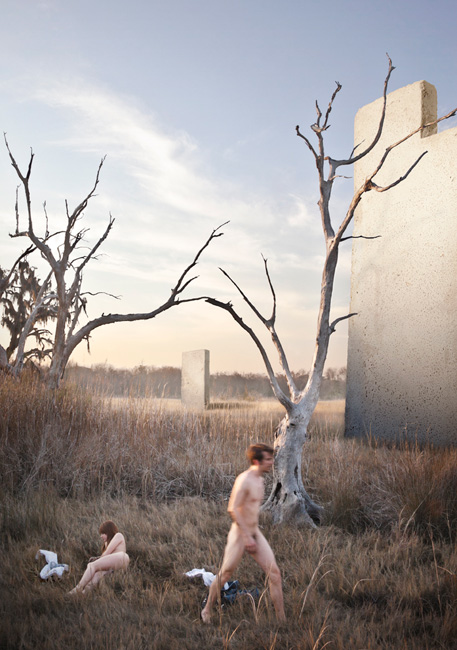



 For more information about Mark Dorf, or to see more images from his series Environmental Occupations, check out his website.
Highlight by Caitie Moore
For more information about Mark Dorf, or to see more images from his series Environmental Occupations, check out his website.
Highlight by Caitie Moore
 Aint-Bad Magazine is a quarterly art journal that promotes the work of photographic artists. We support a progressive community of artists from around the world in a printed publication and web based forum. Our aim is to engage a discussion of contemporary culture and human existence through the examination of contemporary photography.
For a one time fee of $65 (USA and Canada) you will receive:
4 - Issues of Aint-Bad Magazine ($18 x 4 = $72)
1 - Limited Edition Artist Publication
1 - Screen Printed Canvas Tote Bag
(Shipping included)
We will also throw in any additional promotional materials created throughout the year.
Why Should I subscribe to Aint-Bad Magazine?
To ensure that you will never miss an issue. Being a
Subscriber means that you receive your copy of our
most recent issues before they hit stores– and for less!
*International subscription fee of $75 per year.
*Due to limited edition sizes, subscriptions are limited to the first 250 customers.
Order at our Shop →
Aint-Bad Magazine is a quarterly art journal that promotes the work of photographic artists. We support a progressive community of artists from around the world in a printed publication and web based forum. Our aim is to engage a discussion of contemporary culture and human existence through the examination of contemporary photography.
For a one time fee of $65 (USA and Canada) you will receive:
4 - Issues of Aint-Bad Magazine ($18 x 4 = $72)
1 - Limited Edition Artist Publication
1 - Screen Printed Canvas Tote Bag
(Shipping included)
We will also throw in any additional promotional materials created throughout the year.
Why Should I subscribe to Aint-Bad Magazine?
To ensure that you will never miss an issue. Being a
Subscriber means that you receive your copy of our
most recent issues before they hit stores– and for less!
*International subscription fee of $75 per year.
*Due to limited edition sizes, subscriptions are limited to the first 250 customers.
Order at our Shop →










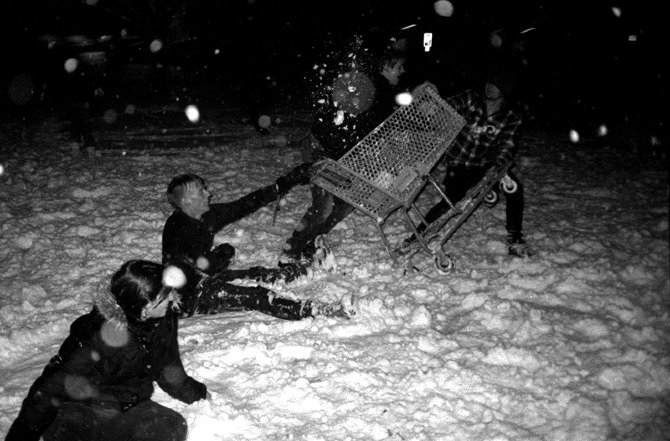
 Matthew is a recent BFA graduate of the New Hampshire Institute of Art. He was recently commissioned to begin a multi year long project on fly fishing in Vermont and has begun a new project revolving around the descendants of George Eastman (Kodak) and their roles in today's society.
For more information about Matt and other projects, visit his website.
Matthew is a recent BFA graduate of the New Hampshire Institute of Art. He was recently commissioned to begin a multi year long project on fly fishing in Vermont and has begun a new project revolving around the descendants of George Eastman (Kodak) and their roles in today's society.
For more information about Matt and other projects, visit his website.
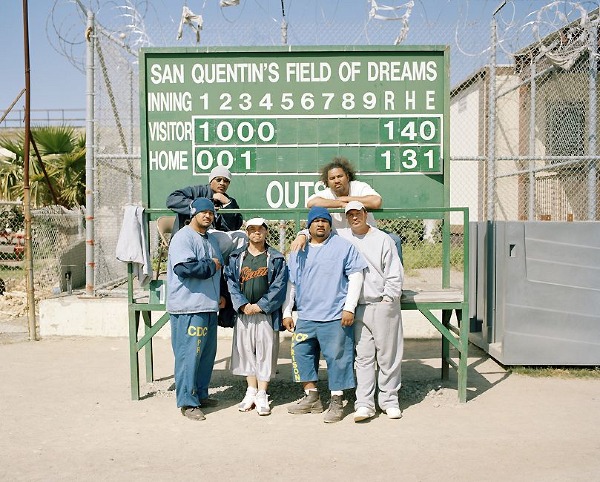 You're based in New York. How has living and working in Brooklyn affected your career as a photographer?
I'd say NY, in general, has influenced me. Everyone is doing something here. Everyone is plotting, scheming, hustling. So you have to plot and scheme harder than them. Seeing what everyone else is doing motivates you to go harder and get up every morning and do something significant.
You're based in New York. How has living and working in Brooklyn affected your career as a photographer?
I'd say NY, in general, has influenced me. Everyone is doing something here. Everyone is plotting, scheming, hustling. So you have to plot and scheme harder than them. Seeing what everyone else is doing motivates you to go harder and get up every morning and do something significant.
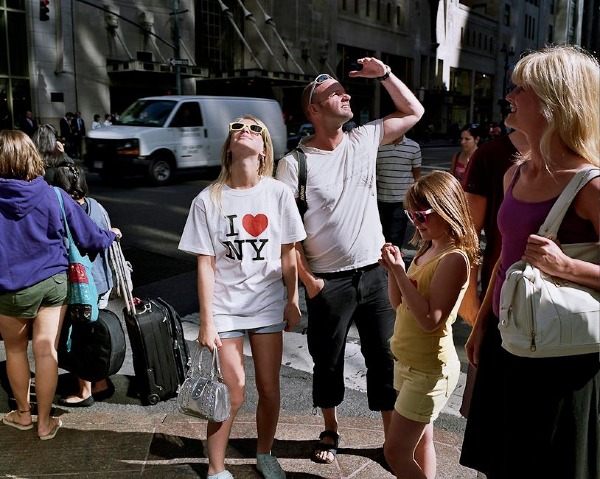 Also, living in Brooklyn reaffirms that you can live as a creative professional. Our parents' generation was about office jobs and suburban dreams, now we can wear Vans and shorts everyday with pride.
What advice would you give to an aspiring commercial photographer?
Two things:
1. Be prepared to be broke for the first couple of years.
2. If you’re only shooting to make money, you’re doing it wrong.
Also, living in Brooklyn reaffirms that you can live as a creative professional. Our parents' generation was about office jobs and suburban dreams, now we can wear Vans and shorts everyday with pride.
What advice would you give to an aspiring commercial photographer?
Two things:
1. Be prepared to be broke for the first couple of years.
2. If you’re only shooting to make money, you’re doing it wrong.
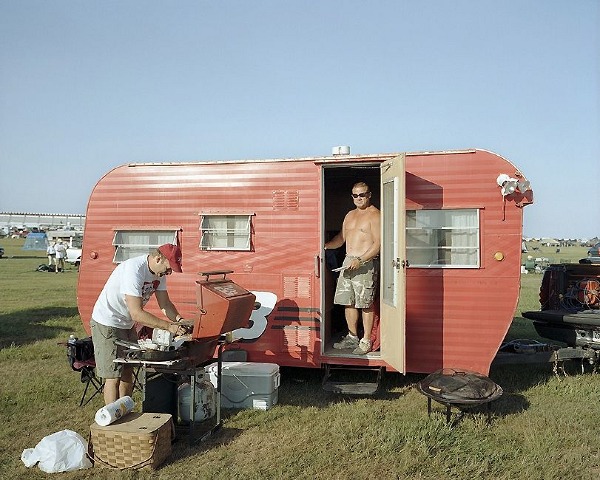 Whats your favorite assignment that you have shot so far in 2012?
It was probably an assignment for Brooklyn Magazine. It was essentially a fashion story, but they asked me to shoot it on large format polaroid (fujiroid). They wanted the portraits to feel like Renaissance paintings, and I think I managed to do a really great job. I'm proud of the photos by themselves, but it makes me happy to know that people see my Time for Print project and it inspires them to do something similar for their magazine.
Whats your favorite assignment that you have shot so far in 2012?
It was probably an assignment for Brooklyn Magazine. It was essentially a fashion story, but they asked me to shoot it on large format polaroid (fujiroid). They wanted the portraits to feel like Renaissance paintings, and I think I managed to do a really great job. I'm proud of the photos by themselves, but it makes me happy to know that people see my Time for Print project and it inspires them to do something similar for their magazine.
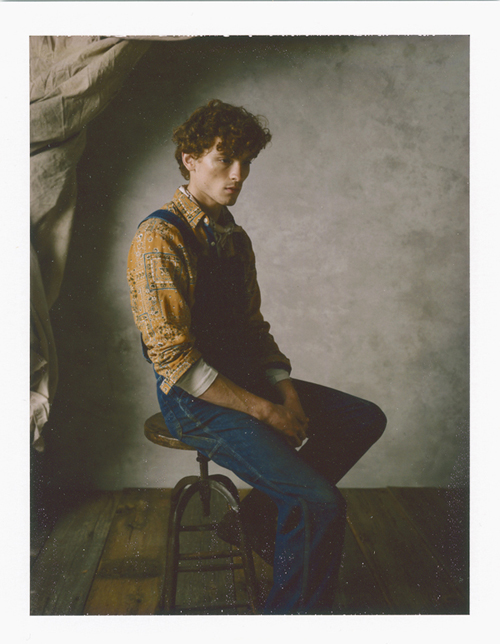 Tell me about TGTO & how you came up with the idea for the publication.
Thank God That's Over is a 16 page newsprint publication that I self-published in May 2012. In 2010, I got an assignment to shoot a travel story on a 5-day cruise. As soon as I got that, I knew I was going to shoot two very different types of photos. TGTO is essentially the photos that I shot for myself while on the cruise.
Tell me about TGTO & how you came up with the idea for the publication.
Thank God That's Over is a 16 page newsprint publication that I self-published in May 2012. In 2010, I got an assignment to shoot a travel story on a 5-day cruise. As soon as I got that, I knew I was going to shoot two very different types of photos. TGTO is essentially the photos that I shot for myself while on the cruise.
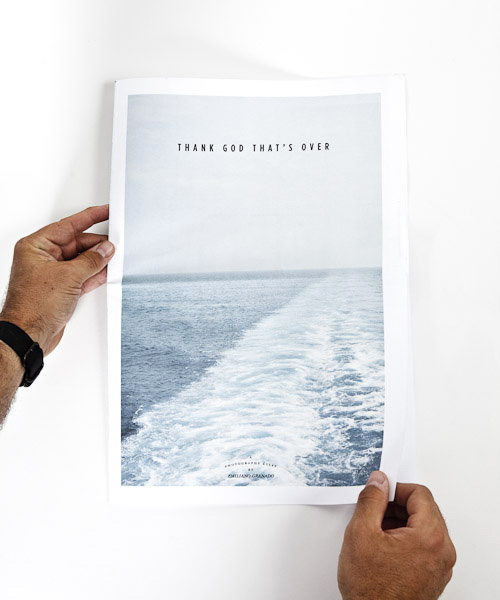
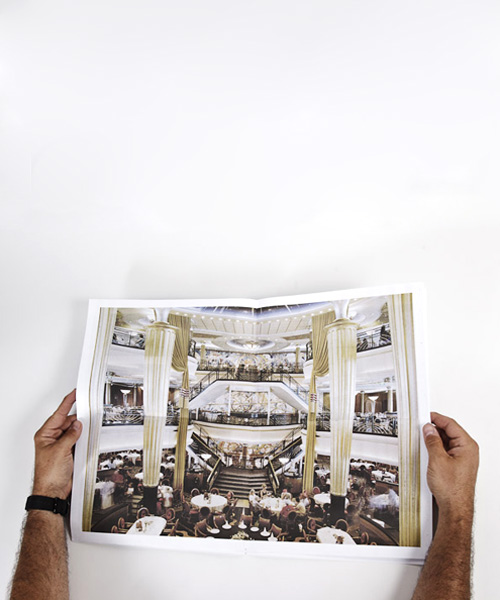 At some point over the last few years, I've gotten tired of pixels on a screen. There are so many photographers and all of them tweet and facebook and update their site and tumbl and whatever else we do. Any one thing we do seems insignificant, so I thought this project deserved something more than a section on my site and a mention in my newsletter (while you're at it, sign up here!!). So I self published this thing to give it some weight and value. Think of it as a website update in a printed form.
At some point over the last few years, I've gotten tired of pixels on a screen. There are so many photographers and all of them tweet and facebook and update their site and tumbl and whatever else we do. Any one thing we do seems insignificant, so I thought this project deserved something more than a section on my site and a mention in my newsletter (while you're at it, sign up here!!). So I self published this thing to give it some weight and value. Think of it as a website update in a printed form.
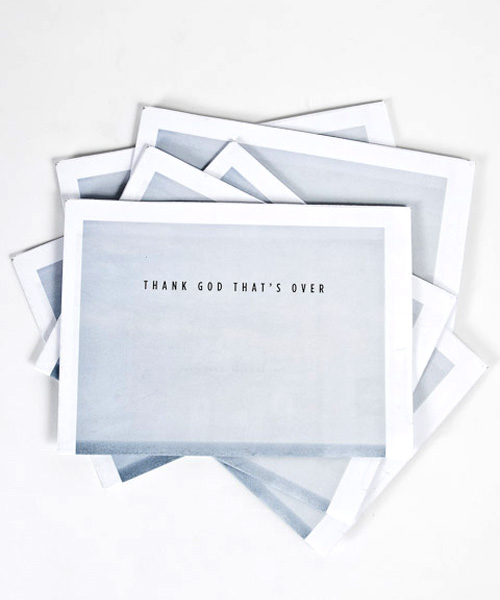 Do you plan to make any future publications?
For sure. I've actually thought about making a printed piece for every website update. It's a great idea, but I don't have time!
Do you plan to make any future publications?
For sure. I've actually thought about making a printed piece for every website update. It's a great idea, but I don't have time!
 Where do you see yourself and your career in the next 5 years?
I'm at an interesting point in my career. I'm no longer "emerging," but I'm trying to round that corner where people start throwing lots of money at me. You hear that art buyers??!! Holler!
Where do you see yourself and your career in the next 5 years?
I'm at an interesting point in my career. I'm no longer "emerging," but I'm trying to round that corner where people start throwing lots of money at me. You hear that art buyers??!! Holler!

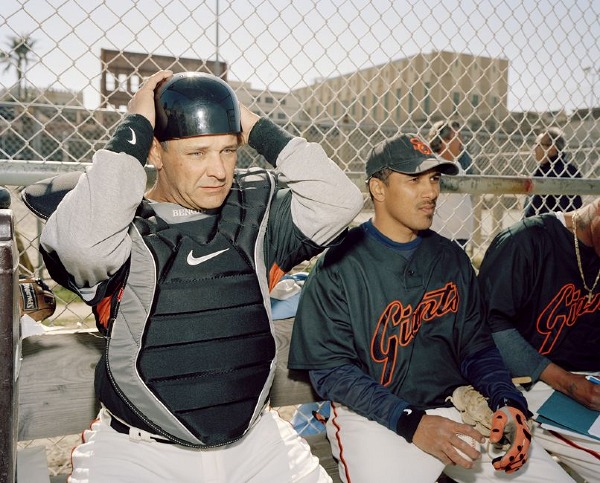 I'm also trying to make sure I don't become strictly an editorial/commercial photographer. I'm always working on personal projects and I need to be better at wrapping those up and showing people that work. I always tell people I could make an entire portfolio with the work people haven't seen. And bridging the gap to the art world is always on my mind. Editing work into finished series is a priority.
I'm also trying to make sure I don't become strictly an editorial/commercial photographer. I'm always working on personal projects and I need to be better at wrapping those up and showing people that work. I always tell people I could make an entire portfolio with the work people haven't seen. And bridging the gap to the art world is always on my mind. Editing work into finished series is a priority.
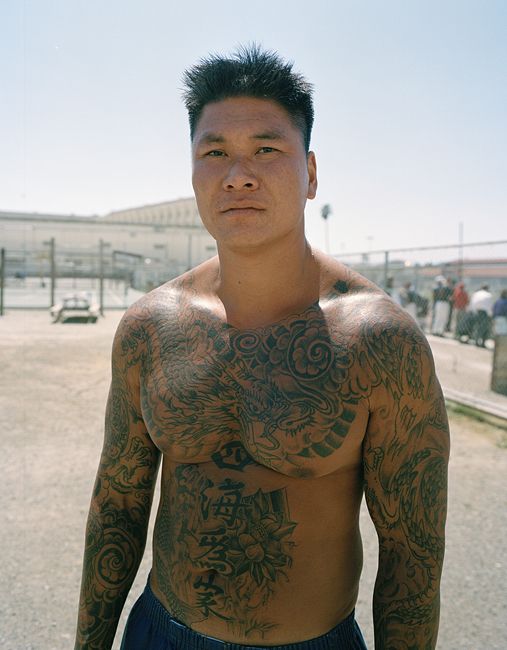 In a world that is quickly becoming digital, you tend to stick with film for most of your projects. Why?
Oh boy.
Almost every argument about film vs digital reduces the question down to the technical stuff. That's such a flawed argument. For me, I shoot a lot of film because it's simply more fun. The cameras are simpler, they can't fire 17 frames a second, they require more mental focus, and you have 2-3 days of visual/emotional rest until you can see the photos. You become detached from them, and then they're born again. You're excited to see them. With digital, you see them IMMEDIATELY and you lose something when everything is so easy and immediate. There's a preciousness to the process of film photography. And I think that builds this emotional attachment to the photos. Not to mention you shoot so much less on film vs digital. The moment is watered down when you have 100 frames to look at versus 5, you know?
In a world that is quickly becoming digital, you tend to stick with film for most of your projects. Why?
Oh boy.
Almost every argument about film vs digital reduces the question down to the technical stuff. That's such a flawed argument. For me, I shoot a lot of film because it's simply more fun. The cameras are simpler, they can't fire 17 frames a second, they require more mental focus, and you have 2-3 days of visual/emotional rest until you can see the photos. You become detached from them, and then they're born again. You're excited to see them. With digital, you see them IMMEDIATELY and you lose something when everything is so easy and immediate. There's a preciousness to the process of film photography. And I think that builds this emotional attachment to the photos. Not to mention you shoot so much less on film vs digital. The moment is watered down when you have 100 frames to look at versus 5, you know?
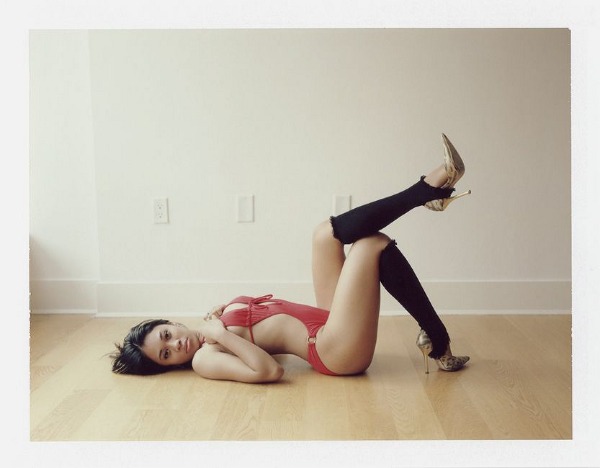 And on the technical front, I haven't been able to dial in the digital files to reproduce colors like film. I know it's possible, but they always look a little bit off to me. I'm more than willing to admit that it's in my head, though.
The depth of field thing is probably the only real technical advantage to film.
And on the technical front, I haven't been able to dial in the digital files to reproduce colors like film. I know it's possible, but they always look a little bit off to me. I'm more than willing to admit that it's in my head, though.
The depth of field thing is probably the only real technical advantage to film.
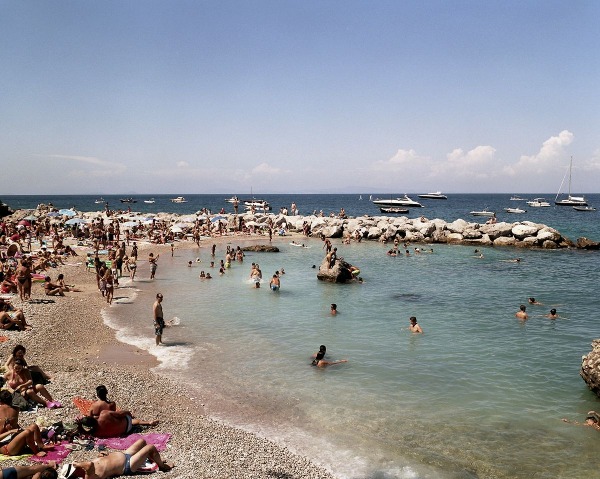 What do you think that adds to the work?
I think my film photography is more precise. I feel more precise and focused with a film camera in my hand. So it might simply be a a feeling that I have with film. But I'm almost always happier with film than digital. And when I'm making personal work, I want to feel good about it, obviously.
What do you think that adds to the work?
I think my film photography is more precise. I feel more precise and focused with a film camera in my hand. So it might simply be a a feeling that I have with film. But I'm almost always happier with film than digital. And when I'm making personal work, I want to feel good about it, obviously.
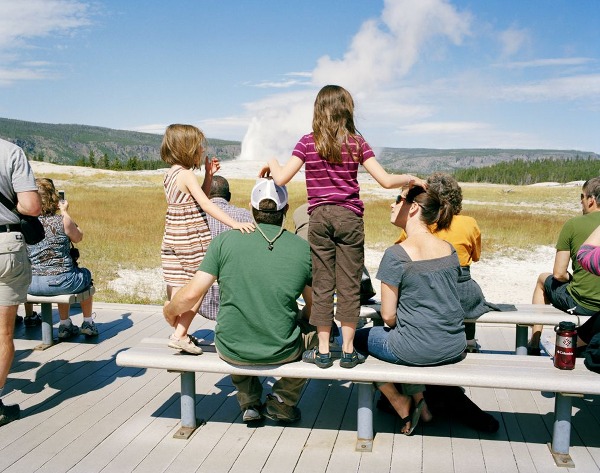 Any big shoots coming up that you can talk about?
See question #7. ART BUYERS, HOLLER!
Ha ha. There is always secretive personal work and wrapping up the 2nd year of Manual for Speed. I hope people see that as a humanistic documentary about athletes, and not simply bike photos.
Any big shoots coming up that you can talk about?
See question #7. ART BUYERS, HOLLER!
Ha ha. There is always secretive personal work and wrapping up the 2nd year of Manual for Speed. I hope people see that as a humanistic documentary about athletes, and not simply bike photos.
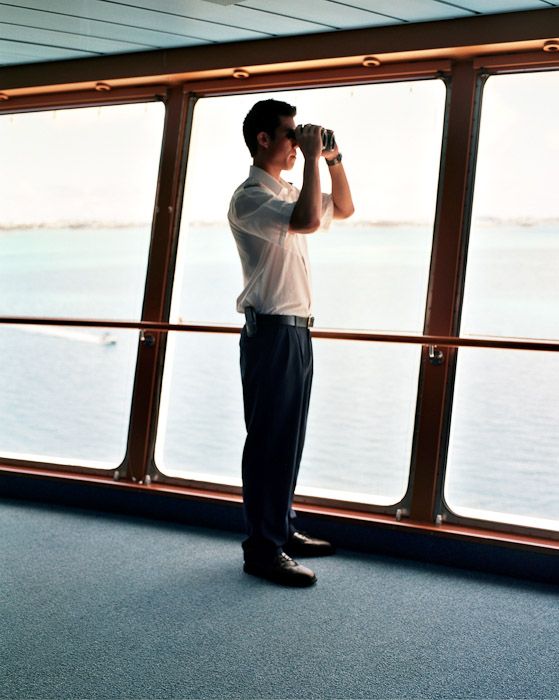 Find out more about Emiliano and view his complete portfolio on his website.
Also check out this projects Manual For Speed and Time For Print.
Interview by Carson Sanders
Find out more about Emiliano and view his complete portfolio on his website.
Also check out this projects Manual For Speed and Time For Print.
Interview by Carson Sanders

 These images were created during a period of vast change within my life, having just had a child among other things. The response to the internal change is a body of work that seeks to visually represent a feeling of being pulled out of a former set of limitations and transcended into a vaster reality.
These images were created during a period of vast change within my life, having just had a child among other things. The response to the internal change is a body of work that seeks to visually represent a feeling of being pulled out of a former set of limitations and transcended into a vaster reality.
 These images are photographs of light projections which are manipulated in front of the camera and contorted to create a new form, one that resembles outer space and all of its vastness-something larger than ourselves.
The large scale of the final prints, which is hung at eye level within a black shadow box frame, allows the viewer to become fully immersed within the image and absorbed into another world.
These images are photographs of light projections which are manipulated in front of the camera and contorted to create a new form, one that resembles outer space and all of its vastness-something larger than ourselves.
The large scale of the final prints, which is hung at eye level within a black shadow box frame, allows the viewer to become fully immersed within the image and absorbed into another world.
 The result is a feeling of elevation above current circumstance, a feeling of being pulled out of your current place and position-a change in perspective. Her work straddles the line between commercial and fine art photography, often gaining the attention of her commercial clients through bodies of personal fine art work.
Throughout all of her images is a consistent use of color as both subject matter and ornamentation, often creating mood and emotion through its careful use.
The result is a feeling of elevation above current circumstance, a feeling of being pulled out of your current place and position-a change in perspective. Her work straddles the line between commercial and fine art photography, often gaining the attention of her commercial clients through bodies of personal fine art work.
Throughout all of her images is a consistent use of color as both subject matter and ornamentation, often creating mood and emotion through its careful use.

 Aside from her commissioned work she always has a camera on hand to capture the images of everyday life, often inspired by the tableaux surrounding her. This way of seeing has lead to a large body of still life journal images that is calming, and serene.
View more of Joanna's work at www.joannamcclure.com
Aside from her commissioned work she always has a camera on hand to capture the images of everyday life, often inspired by the tableaux surrounding her. This way of seeing has lead to a large body of still life journal images that is calming, and serene.
View more of Joanna's work at www.joannamcclure.com
 Sweet Nothings
Sweet Nothings
 Red Tide
"I don't really work in series, but rather seem to have created an ongoing collection of loosely tied vignettes over the past few years. Most of what I've depicted would be the lighthearted and humorous, the relationship between objects and human beings, and a smattering of my fascination with pop culture and the discovery of that which is truly interesting within the mundane."
Red Tide
"I don't really work in series, but rather seem to have created an ongoing collection of loosely tied vignettes over the past few years. Most of what I've depicted would be the lighthearted and humorous, the relationship between objects and human beings, and a smattering of my fascination with pop culture and the discovery of that which is truly interesting within the mundane."
 Buyer's Remorse
Buyer's Remorse
 Inconspicuous Consumption
Inconspicuous Consumption
 Bernoulli's Principle
Bernoulli's Principle
 Duelling Hemispheres
"I work in a very unusual way for a photographer, since I never really have a camera with me, and even if something really catches my interest on the spot, it goes into my notes to be revisited in a more controlled setting later on. The obsession with control over my own ideas often leads me to a strive for perfection within an aesthetic framework as well, relying upon carefully studied principles of composition and colour theory."
Duelling Hemispheres
"I work in a very unusual way for a photographer, since I never really have a camera with me, and even if something really catches my interest on the spot, it goes into my notes to be revisited in a more controlled setting later on. The obsession with control over my own ideas often leads me to a strive for perfection within an aesthetic framework as well, relying upon carefully studied principles of composition and colour theory."
 Cause and Effect
Cause and Effect
 The Inaccurate Solar System
The Inaccurate Solar System
 Steady Decline
Steady Decline
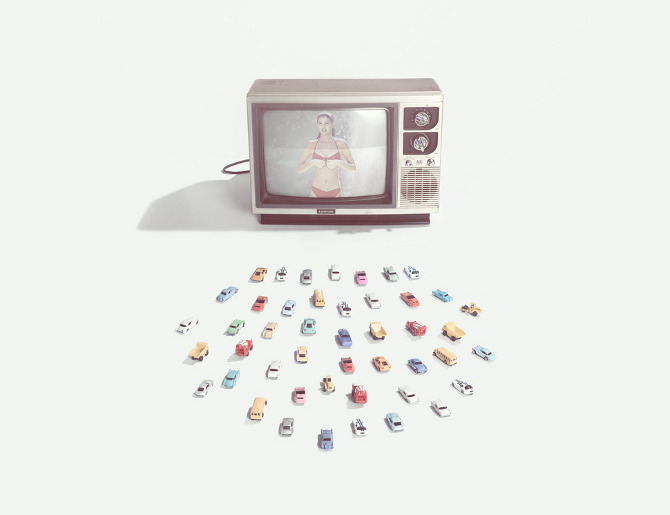 Fast Times at Ridgemont High
Andrew's recent publications include Time, Wired, the Walrus, Le Monde, Creative Review, Esquire Russia.
Find more of his work on his website
Fast Times at Ridgemont High
Andrew's recent publications include Time, Wired, the Walrus, Le Monde, Creative Review, Esquire Russia.
Find more of his work on his website
 Arnaud Teicher relies on literature in addition to nature to inform and enhance his photography. With texture, contrasting darks and lights, and repetition Teicher’s his images are inspired by writers such as Thoreau, Jon Krakauer, and Rick Bass. These elements sharpen and magnify the spirituality that comes from returning to a silent, contemplative state, experienced by entering the forest.
The series begins with a striking image of a fox’s pelt draped over the face of a male figure. The figure is centered and the image is made up of contrasting lights and textures juxtaposed to play off of each other sharply but harmoniously. The black fur of the fox’s legs just brushes over the fair skinned shoulders of the figure. The verticality of the figure’s arms and the fox’s legs is echoed in the verticality of the tree trunks in the blurred background of the forest. The trees, white and dizzyingly out of focus, loom out of the darkened forest beyond. The pristinely sharp focus of the focal point suggests stillness, perhaps in meditation, juxtaposed with the blurred, shivering trees.
Arnaud Teicher relies on literature in addition to nature to inform and enhance his photography. With texture, contrasting darks and lights, and repetition Teicher’s his images are inspired by writers such as Thoreau, Jon Krakauer, and Rick Bass. These elements sharpen and magnify the spirituality that comes from returning to a silent, contemplative state, experienced by entering the forest.
The series begins with a striking image of a fox’s pelt draped over the face of a male figure. The figure is centered and the image is made up of contrasting lights and textures juxtaposed to play off of each other sharply but harmoniously. The black fur of the fox’s legs just brushes over the fair skinned shoulders of the figure. The verticality of the figure’s arms and the fox’s legs is echoed in the verticality of the tree trunks in the blurred background of the forest. The trees, white and dizzyingly out of focus, loom out of the darkened forest beyond. The pristinely sharp focus of the focal point suggests stillness, perhaps in meditation, juxtaposed with the blurred, shivering trees.

 But the most startling contrast is perhaps the most obvious: the face of a wild animal on the shoulders of a man. A metamorphosis is taking place. The fox seems to swallow the figure. Despite the contrasts of Teicher’s technique, one cannot help but notice the melding together of man and beast, a return to the wild.
But the most startling contrast is perhaps the most obvious: the face of a wild animal on the shoulders of a man. A metamorphosis is taking place. The fox seems to swallow the figure. Despite the contrasts of Teicher’s technique, one cannot help but notice the melding together of man and beast, a return to the wild.
 The transformation continues with the photograph of the figure running down what looks like the road less traveled, his back to the viewer. The fox pelt hangs off his back, covering much of his upper body in fur and the camera catches his arms out-stretched and the figure in mid-stride. He looks small on the forest path that is lined by evergreen trees. They tower over him, engulfing most of the photograph. In the same way as a writer, Teicher assigns symbolism to the subject matter. The figure is more consumed, more in step with the rich textures of the trees, the fur, and with the wild. The metamorphosis is a spiritual one, and man – just as his possessions – can be steadily swallowed up by the natural world when letting go and embracing its meditative qualities.
The male figure appears throughout the series and in a recurring state of abandoning the man-made and in embracing the natural world. Teicher’s photograph of an old, broken down van in a pasture seems to be an ode to nature’s insatiable appetite and ability to swallow up and grow over the man-made elements – including human life – as well as a nod to Chris McCandless’s Magic Bus in Krakauer’s Into the Wild. “Literature is important to my work,” says Teicher. “[It is] a source of questions for me, dreams and contemplation.” Though there aren’t literal vines wrapping around the van, Teicher allows careful composition to foreshadow the inevitable fate of the sedentary vehicle. Centered in the composition, the van is surrounded by the varying shades of the land – the grass growing up around the bumper, growing over any evidence of tire tracks, and the mountains in the background towering over the tired looking machine. A tree behind the van appears to grow right out of the roof of the vehicle. “I ask myself about human’s place in nature and the way they evolve through time, while trying to capture the beauty of it.” This includes the power of the wilderness on the human body and mind.
The transformation continues with the photograph of the figure running down what looks like the road less traveled, his back to the viewer. The fox pelt hangs off his back, covering much of his upper body in fur and the camera catches his arms out-stretched and the figure in mid-stride. He looks small on the forest path that is lined by evergreen trees. They tower over him, engulfing most of the photograph. In the same way as a writer, Teicher assigns symbolism to the subject matter. The figure is more consumed, more in step with the rich textures of the trees, the fur, and with the wild. The metamorphosis is a spiritual one, and man – just as his possessions – can be steadily swallowed up by the natural world when letting go and embracing its meditative qualities.
The male figure appears throughout the series and in a recurring state of abandoning the man-made and in embracing the natural world. Teicher’s photograph of an old, broken down van in a pasture seems to be an ode to nature’s insatiable appetite and ability to swallow up and grow over the man-made elements – including human life – as well as a nod to Chris McCandless’s Magic Bus in Krakauer’s Into the Wild. “Literature is important to my work,” says Teicher. “[It is] a source of questions for me, dreams and contemplation.” Though there aren’t literal vines wrapping around the van, Teicher allows careful composition to foreshadow the inevitable fate of the sedentary vehicle. Centered in the composition, the van is surrounded by the varying shades of the land – the grass growing up around the bumper, growing over any evidence of tire tracks, and the mountains in the background towering over the tired looking machine. A tree behind the van appears to grow right out of the roof of the vehicle. “I ask myself about human’s place in nature and the way they evolve through time, while trying to capture the beauty of it.” This includes the power of the wilderness on the human body and mind.

 Even in the figure’s nudity, Teicher suggests a return to the elements. In the same way that the photograph of the fox over his face conveys a spiritual transformation, the photograph of the figure kneeling before the fox skin conveys the sanctity of the wilderness. The fire in the foreground leans in the wind and suggests something ceremonial, even ancient or other-worldly. Through literature and photography, Teicher can “think and ask questions about the relationship between man and the environment, the isolation, and [I can] imagine going away…alone and in a fairly primitive way. [In nature I] feel things in a stronger way.” Teicher seems to return to literary devices, using the male figure to personify the spirit’s contemplation and transcendence in the wilderness, the completion of the metamorphosis.
Even in the figure’s nudity, Teicher suggests a return to the elements. In the same way that the photograph of the fox over his face conveys a spiritual transformation, the photograph of the figure kneeling before the fox skin conveys the sanctity of the wilderness. The fire in the foreground leans in the wind and suggests something ceremonial, even ancient or other-worldly. Through literature and photography, Teicher can “think and ask questions about the relationship between man and the environment, the isolation, and [I can] imagine going away…alone and in a fairly primitive way. [In nature I] feel things in a stronger way.” Teicher seems to return to literary devices, using the male figure to personify the spirit’s contemplation and transcendence in the wilderness, the completion of the metamorphosis.
 Though Teicher is influenced by such works as photographer Laura McPhee’s River of No Return, it is writing that holds the strongest impact on his own photography. “On reflection, I look more toward literature,” Teicher says. His work is a meditation on the natural world, man’s role within it, but also a meditation on the writings and writers who have sought refuge in the forest. Arnaud Teicher has carried on a conversation with those writers he works from. His photographic image has become a means to interpret the writing and from one medium to the next – the written word to the image – translates the writings for new eyes, new minds, and new spirits.
See more of Arnaud Teicher on his website.
Allison Young is a writer and art historian working in Charleston South Carolina.
Though Teicher is influenced by such works as photographer Laura McPhee’s River of No Return, it is writing that holds the strongest impact on his own photography. “On reflection, I look more toward literature,” Teicher says. His work is a meditation on the natural world, man’s role within it, but also a meditation on the writings and writers who have sought refuge in the forest. Arnaud Teicher has carried on a conversation with those writers he works from. His photographic image has become a means to interpret the writing and from one medium to the next – the written word to the image – translates the writings for new eyes, new minds, and new spirits.
See more of Arnaud Teicher on his website.
Allison Young is a writer and art historian working in Charleston South Carolina.